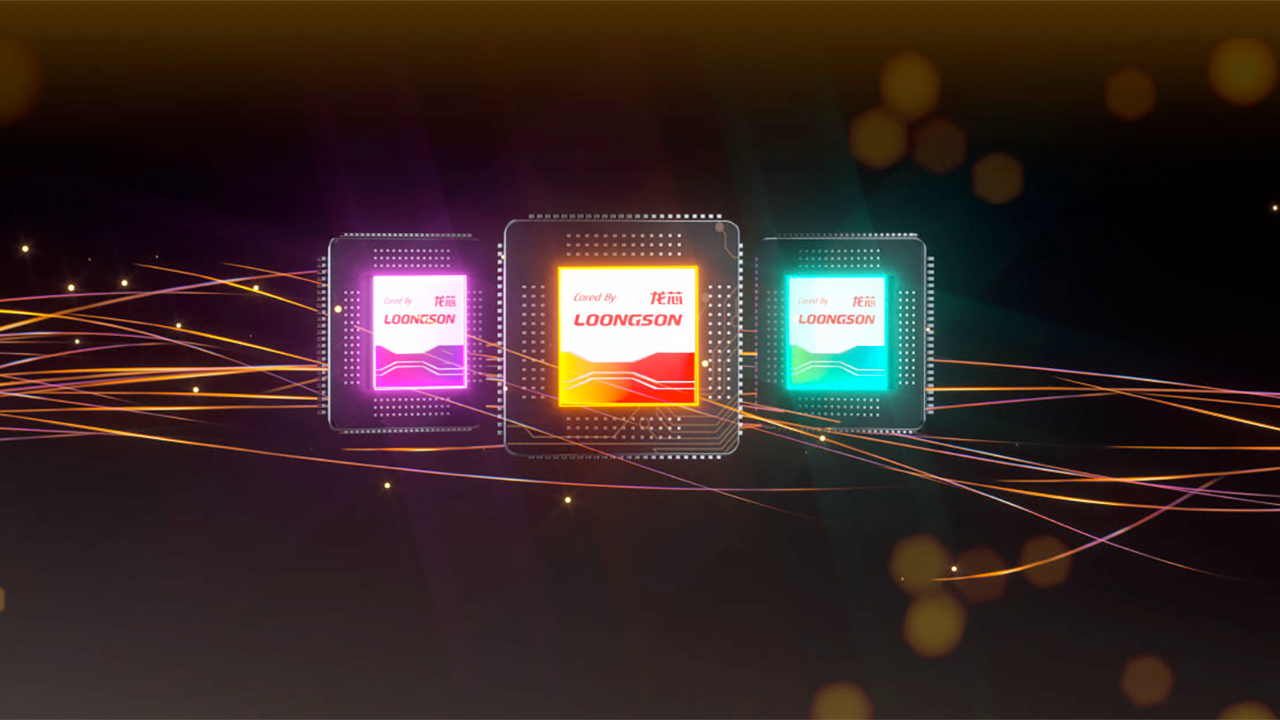Chinese Loongson CPU Takes on AMD's Zen 3 in Benchmarks
Approximately Zen 3 levels of IPC, based on testing.

MyDrivers has published a review of Loongson's 3A6000 quad-core CPU, confirming that the chip's IPC improvements are real. Benchmarks reveal that the 3A6000 enjoys an impressive 60% performance uplift in single-core performance and an even more impressive 2x performance multiplier in multi-core performance over its 3A5000 predecessor. With these improvements, the 3A6000 features performance comparable to a Core i3-10100F, with the IPC performance of a Zen 3 chip.
Of course, both Intel's Comet Lake 10th Gen architecture and AMD's Zen 3 architecture are now coming up on three years old. They're nowhere near the top of our list of the best CPUs for gaming or other purposes. But it still represents a step in the right direction.
Loongson's 3A6000 is the company's latest CPU featuring its home-brewed Dragon CPU architecture. The chip sports a quad-core design featuring multi-threading support, with a new 6-way multiple-issue design that makes the 3A6000 substantially more efficient than its predecessor. The chip's clock speed is rated at 2.5GHz. However, the CPU does not feature native x86 support due to political reasons. As a result, it features fully proprietary instructions in place of x86-supported instruction sets and utilizes virtualization and translation techniques to run x86 applications (when needed).
The 3A6000 was tested in SPEC CPU 2006 and UnixBench against Intel's Core i3-10100F and AMD's Ryzen 3 3100 entry-level CPUs. In Spec CPU 2006, the Loongson chip was 5% slower than the i3-10100F, and anywhere between 10-15% slower than the Ryzen 3 3100 in the single-core and multi-core tests.
UnixBench showed similar results for the 3A6000. The Chinese CPU was 2% slower than the i3-10100F and 8% slower compared to the Ryzen 3 3100 in the single-core test. In the multi-core benchmark, the 3A6000 was 8% slower than the i3-10100F and 11% slower than the Ryzen 3 3100.
These new benchmark reports confirm previous performance analyses by Loongsoon themselves stating that the A36000 chip would feature comparable performance to Intel's older 10th Gen Comet Lake CPUs. The 3A6000 doesn't beat Intel's Core i3-10100F counterpart, but it does get relatively close. At the same time, these tests represent a limited overview of performance and are generally synthetic in nature.
Longsoon's original IPC analysis has so far been proven to be legitimate. Even though the 3A6000 is only targeting Comet Lake performance, it's doing it at just 2.5GHz, which is substantially lower than the Core i3-10100F's 4.3 GHz peak turbo clock. If Longsoon can figure out how to boost clock speeds to 4GHz or higher, its CPU architecture might be able to compete with the likes of AMD's and Intel's more recent CPU architectures.
This will be important as Longsoon continues to try and compete with its Western competitors in the race for higher CPU performance. And with increasing export restrictions, the Chinese government will have plenty of reasons to continue supporting one of its most successful home grown alternatives.
Get Tom's Hardware's best news and in-depth reviews, straight to your inbox.

Aaron Klotz is a contributing writer for Tom’s Hardware, covering news related to computer hardware such as CPUs, and graphics cards.
-
bit_user ReplyHowever, the CPU does not feature native x86 support due to political reasons.
No, Loongson has been around for a while and never even tried to do x86, as far as I'm aware. Remember that even before the issue of ISA getting politicized, not just anyone could decide to build a x86 CPU. To do so requires patents that Intel & AMD won't simply let just anyone use.
If anything, Loongson was cloning MIPS, but they insist it's not MIPS and actually have a few good points on that front. -
Findecanor Reply
LoongSon's approach is not to support the ISA in hardware, but to translate x86 code in software.bit_user said:No, Loongson has been around for a while and never even tried to do x86, as far as I'm aware.
They have developed extensions to their base ISA with instructions that have specific x86 behaviour, that are not supposed to be used by native programs. -
Cooe The Ryzen 3 3100 was Zen 2 based NOT ZEN 3!!!! You're entire headline is straight up wrong. 🤷Reply -
bit_user Reply
That's basically what Apple did. They have a special mode you put a core into, which changes the behavior of its caches and memory subsystem to match x86. Furthermore, Apple hid a nonstandard extension in an obscure part of the ARM ISA to make it faster to emulate certain key x86 instructions.Findecanor said:LoongSon's approach is not to support the ISA in hardware, but to translate x86 code in software.
They have developed extensions to their base ISA with instructions that have specific x86 behaviour, that are not supposed to be used by native programs. -
bit_user Reply
I sort of doubt it, but perhaps it'll happen if it catches on as a mainstream client platform. However, since it supports Linux, there's a wealth of other benchmarks it should be able to run.nookoool said:Any chance we will ever see more mainstream benchmarks like geekbench ported over?
SPEC2006 is an odd choice, because it's been declared fully obsolete by SPEC. Furthermore, they should be able to run SPEC2017. On most modern CPUs, SPEC2006 seems to have artificially high cache hit-rates. In contrast, the SPEC2017 rate-n benchmarks are incredibly memory-intensive. That could suggest why they opted to run the former and not the latter, but it's also possible the CPU & its toolchain support is so new they hit a few bugs in SPEC2017.